 Waste-based Materials Experiment
Waste-based Materials Experiment
This research aims to develop and understand the manufacturing of bio-materials from coffee grounds.
Coffee is one of the most popular beverages in the world, and its popularity is growing all the time, as seen by output nearly doubling in the last three decades. For many years, people have known how to grow, process, roast, and brew coffee. Polymer chemistry and technology have received a lot of attention as one of the possibilities. Different types of lignocellulosic materials can be used as fillers for polymer composites or as intermediary sources of certain chemical compounds in this industry segment.
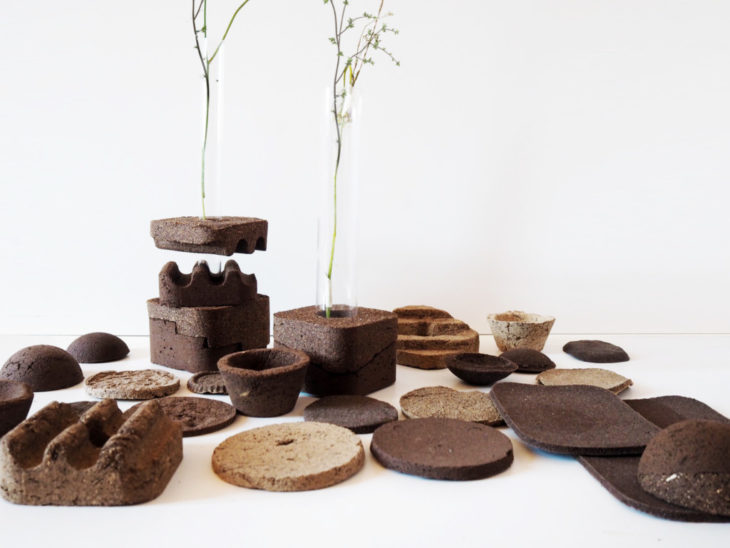
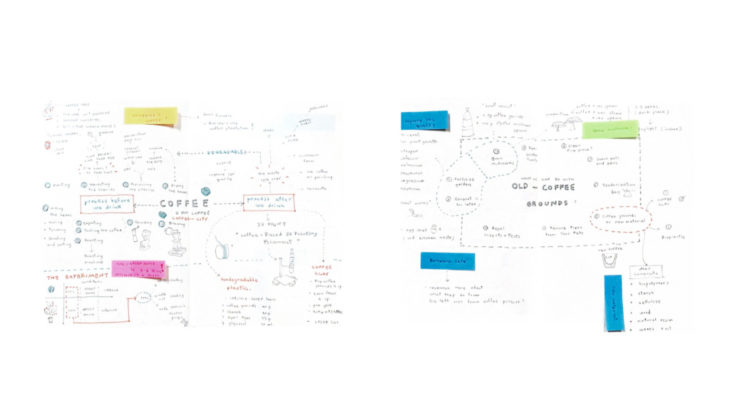 [Collective of initial ideas at the beginning of research]
[Collective of initial ideas at the beginning of research]
Spent coffee grounds (SCGs) are another key waste product generated by coffee consumption at Valldaura Labs, with approximately 1000 grams per week generated and the potential to be used for a variety of applications due to their high organic content. Not just only for gardening purposes, SCGs can be exploited as a possible feedstock for developing coffee-based biomaterials through various biotechnological processes.
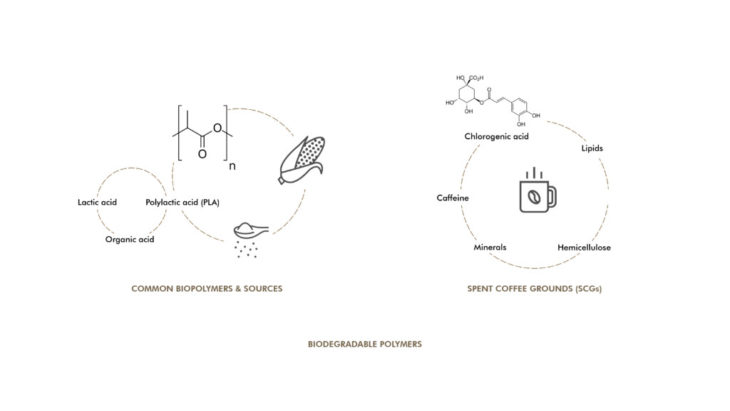 Bioplastic is a type of plastic that is either bio-based or biodegradable and in which none of the compounds produced by the plastic compositions are toxic to the environment. One of the most often utilized polymers for bioplastic manufacturing is synthetic polyester polylactic acid (PLA). PLA, on the other hand, has low thermal stability and weak water vapor and gas barrier qualities when compared to the most extensively used petrochemical plastics, restricting its application range. PLA is made from the fermentation of starch-rich plants including corn, beets, and wheat bran, which is a societal disadvantage because these raw materials are used directly in human and animal nutrition. Biomolecules of interest for creating bioplastics must be collected from agri-food by-products to avoid any form of competition between different industry sectors.
Bioplastic is a type of plastic that is either bio-based or biodegradable and in which none of the compounds produced by the plastic compositions are toxic to the environment. One of the most often utilized polymers for bioplastic manufacturing is synthetic polyester polylactic acid (PLA). PLA, on the other hand, has low thermal stability and weak water vapor and gas barrier qualities when compared to the most extensively used petrochemical plastics, restricting its application range. PLA is made from the fermentation of starch-rich plants including corn, beets, and wheat bran, which is a societal disadvantage because these raw materials are used directly in human and animal nutrition. Biomolecules of interest for creating bioplastics must be collected from agri-food by-products to avoid any form of competition between different industry sectors.
On a dry weight basis, SCG is constituted by polysaccharides (66%), mainly galactomannans (50%), arabinogalactans (25%), and cellulose (25%). They are water-soluble and form highly viscous and stable aqueous solutions with a film-forming ability.
[Material Experiment]
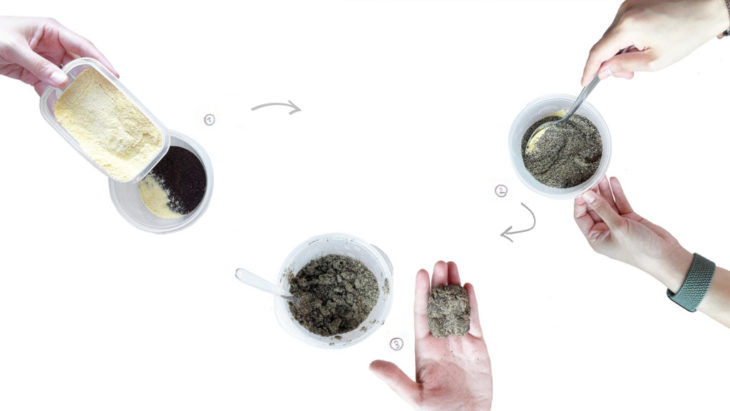 [First Experiment : SCGs + Starch + Glue]
[First Experiment : SCGs + Starch + Glue]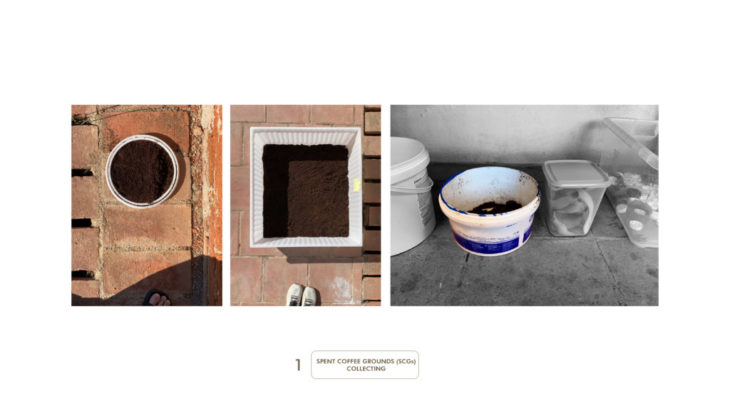
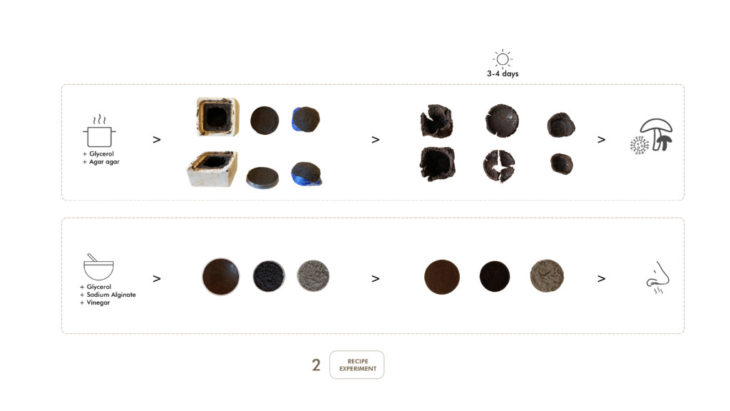
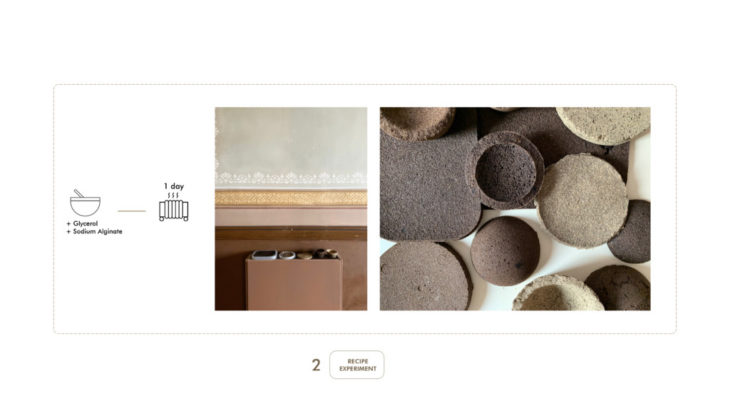
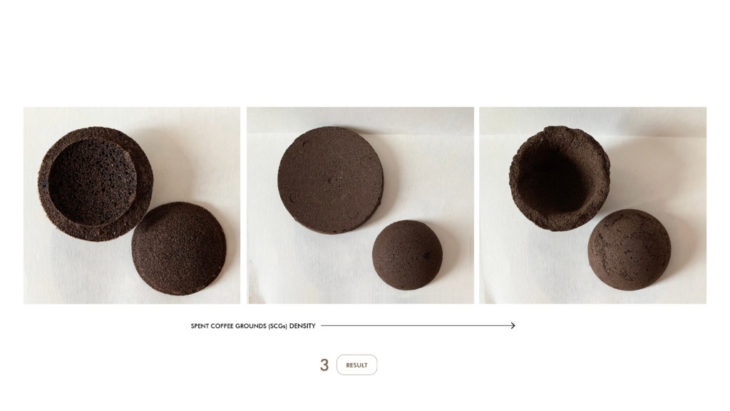 __________________________________________________________________________________________________
__________________________________________________________________________________________________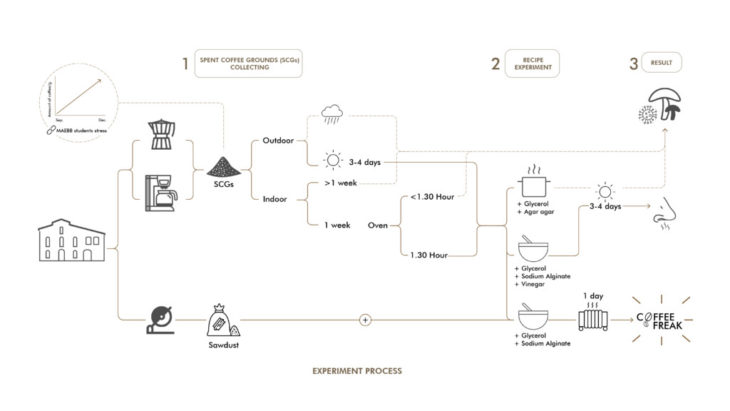 __________________________________________________________________________________________________
__________________________________________________________________________________________________
[Design Process]
Making Multi-use products from used coffee grounds + Negative Mold Design from 3D print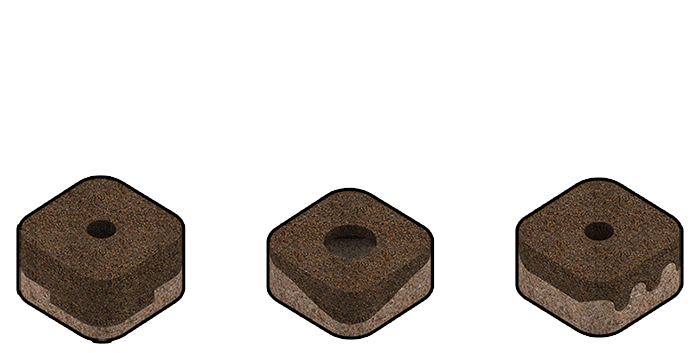
Making Module in pair for using the same mold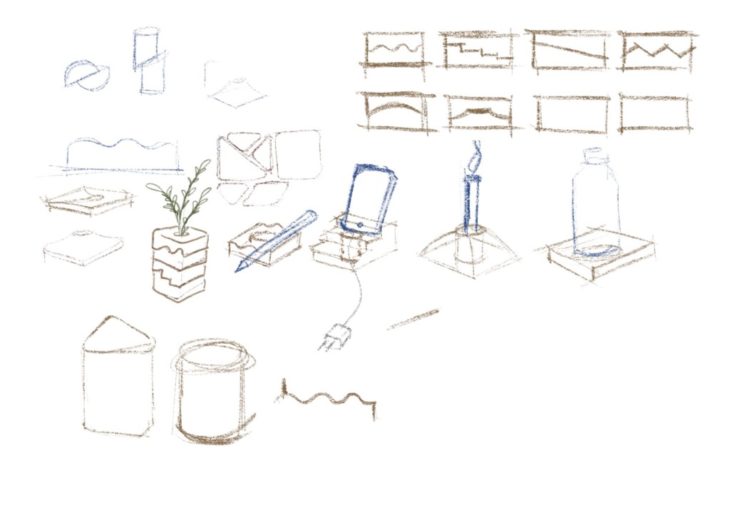
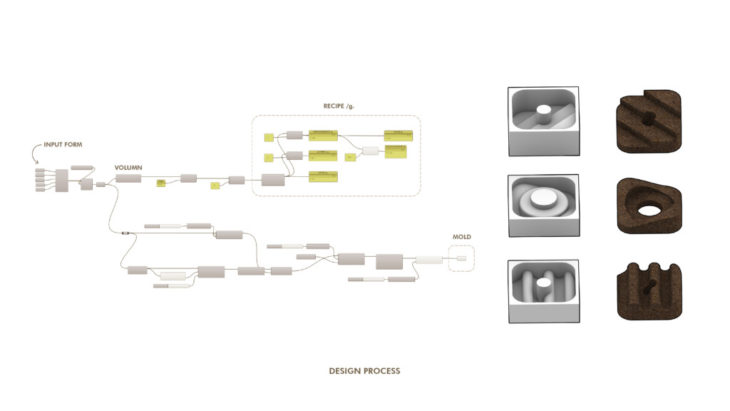
Grasshopper Script for calculating the amount of Recipe and Mold Design
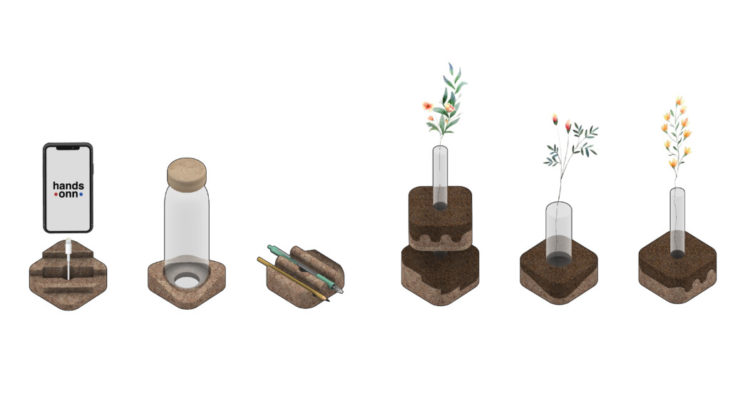
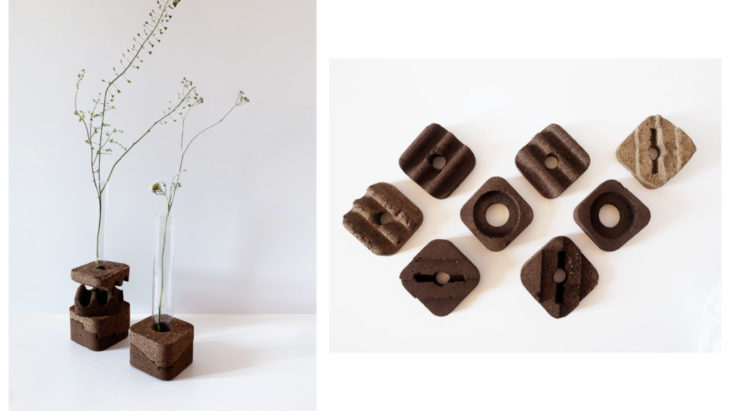
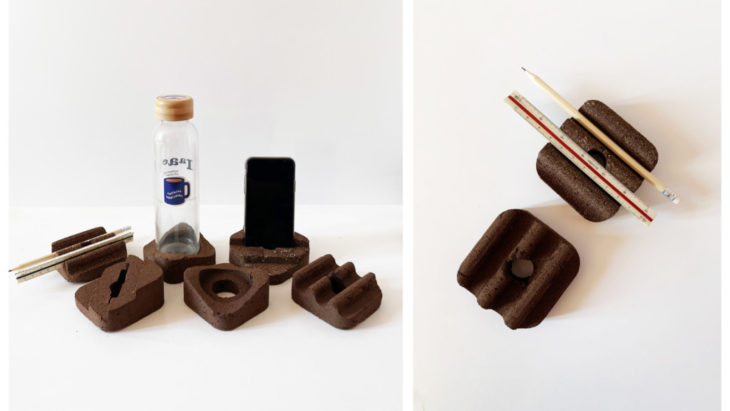
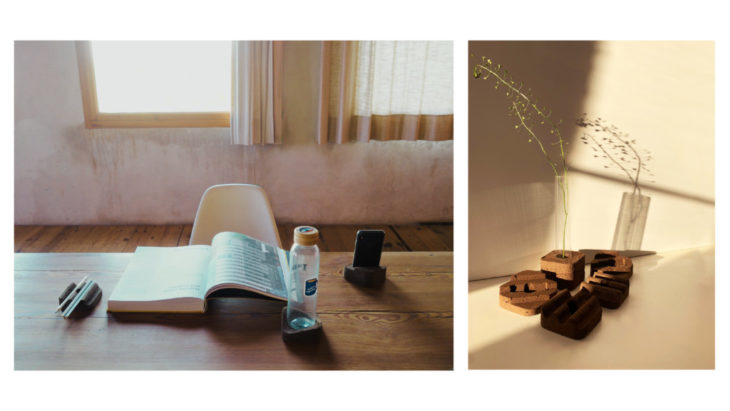
Coffee Freak is a project of IAAC, the Institute for Advanced Architecture of Catalonia, developed in the Master in Advanced Ecological Buildings and Biocities (MABB01) 2021/22
by students: Suwapat Rodprasert; faculty: Kya Kerner